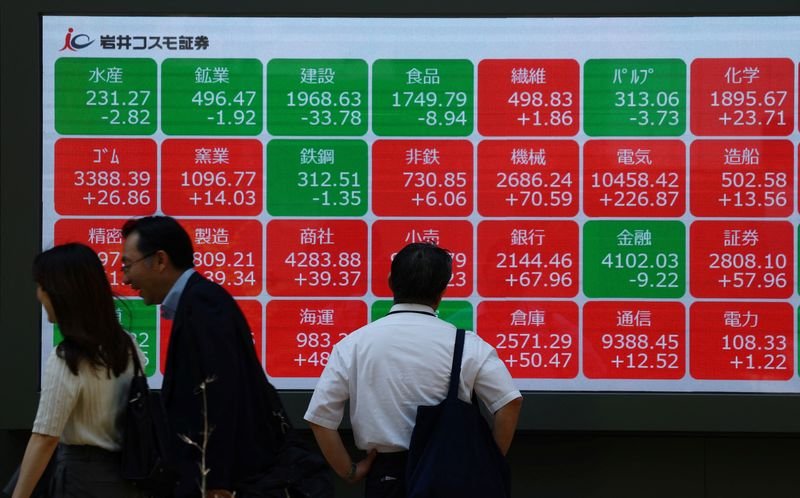Market Update: Key Trends and Movements
Major Index Performance
On Wednesday, the S&P 500 Index experienced a decline of 0.27%, while the Dow Jones Industrial Average remained unchanged. The Nasdaq 100 fell by 0.37%. Future indicators showed that June E-mini S&P futures were down 0.25%, and June E-mini Nasdaq futures decreased by 0.31%.
After initially advancing, stock indexes ended lower as semiconductor stocks, which had initially risen, gave up their gains, contributing to the market’s overall downward movement.
Geopolitical Influences
Rising geopolitical tensions led to an increase in stock liquidations. Reports indicated that the U.S. embassy in Iraq was preparing for potential evacuation due to escalating security concerns. Tensions between the U.S. and Iran have intensified, particularly around discussions regarding Iran’s nuclear ambitions, with President Trump expressing diminished confidence in persuading Iran to halt its program. The possibility of military action by Israel against Iran’s nuclear facilities looms if diplomatic talks fail.
Inflation and Economic Data
The stock market had initially received support from falling bond yields and a U.S. Consumer Price Index (CPI) report for May that came in below expectations, alleviating some inflation fears. The yield on the 10-year Treasury note dropped 5 basis points to 4.41%.
President Trump announced a completed trade framework with China, which initially boosted market confidence. As part of this agreement, China will supply rare earth elements and magnets in exchange for increased access for Chinese students to American universities.
In the real estate sector, U.S. mortgage applications rose 12.5% for the week ending June 6, with purchase mortgage applications increasing by 10.3%, and refinancing applications rising 15.6%. Meanwhile, the average 30-year fixed mortgage rate rose slightly from 6.92% to 6.93%.
May CPI Report
The May CPI increased by 2.4% year-over-year, aligning with expectations. Excluding food and energy, the CPI rose 2.8% year-over-year, unchanged from April and slightly lower than forecasts of 2.9%. The U.S. federal budget deficit for May expanded to a six-month high of $316 billion, exceeding the anticipated $314 billion.
As the week progresses, markets are focused on updates concerning tariffs and U.S.-China trade negotiations. Initial unemployment claims are projected to drop by 6,000 to reach 241,000. Additionally, the May final-demand Producer Price Index (PPI) is expected to rise from 2.4% year-over-year in April to 2.6%. Finally, the preliminary June University of Michigan Consumer Sentiment Index is predicted to increase by 1.3 points to 53.5.
Global Market Insights
Internationally, stock markets exhibited mixed results. The Euro Stoxx 50 concluded down by 0.41%. In contrast, China’s Shanghai Composite rose to a four-week high, gaining 0.52%, while Japan’s Nikkei 225 climbed by 0.55%, reaching a 3.5-month high.
Interest Rate Trends
Wednesday also saw September 10-year Treasury notes increase by 15.5 ticks, with the yield falling to 4.412%. The recovery in T-notes followed less-than-expected CPI data for May, which is considered a dovish indicator for Federal Reserve policy. The yield on the 10-year breakeven inflation expectations rate decreased to a one-month low of 2.275%. Despite Tuesday’s auction having mediocre demand, T-notes managed to maintain their gains.
European government bond yields saw a rise, with the 10-year German bund yield increasing by 1.1 basis points and the British gilt yield climbing by 1.0 basis points.
U.S. Stock Moves
Chip stocks faced significant pressure, which impacted the broader market. Intel’s shares fell more than 6%, leading losses in the S&P 500 and Nasdaq. Other notable declines within the semiconductor sector included ON Semiconductor Corp, which dropped over 3%, and GlobalFoundries, which fell by more than 2%.
In the steel industry, stocks retreated amid discussions between the U.S. and Mexico regarding tariff reductions on certain steel imports, raising speculation about similar concessions from other countries. Cleveland-Cliffs saw a decline of more than 8%, while Nucor fell over 6%.
Airline stocks were under pressure after a surge in crude oil prices, leading to higher jet fuel costs. United Airlines Holding and American Airlines Group both experienced declines of over 5%.
Additionally, American Superconductor Corp’s stock plummeted more than 14% following the announcement of an underwritten public offering at a price significantly below its previous closing price. Chewy also experienced losses, dropping more than 11% after a Q1 gross margin report fell short of expectations.
Positive Stock Movements
On a more positive note, Warner Bros Discovery’s stock rose by 5% after it indicated plans to expand its bond buyback. Talen Energy saw an increase of over 7% following the extension of its nuclear power pact with Amazon. Starbucks also gained over 4% as interest grew regarding a potential stake sale in its China operations.
Energy producers rallied, benefitting from rising crude prices, with companies like Devon Energy and ConocoPhillips reporting gains of over 2%. Palantir Technologies’ stock also climbed over 2% after an upward revision of its price target by Mizuho Securities.
Earnings Reports
Among the notable earnings reports due this week are those from Adobe Inc, America’s Car-Mart Inc, Immersion Corp, Lovesac Co, and RH.
This market update reflects the current landscape and ongoing influences affecting stock performance and economic conditions.
